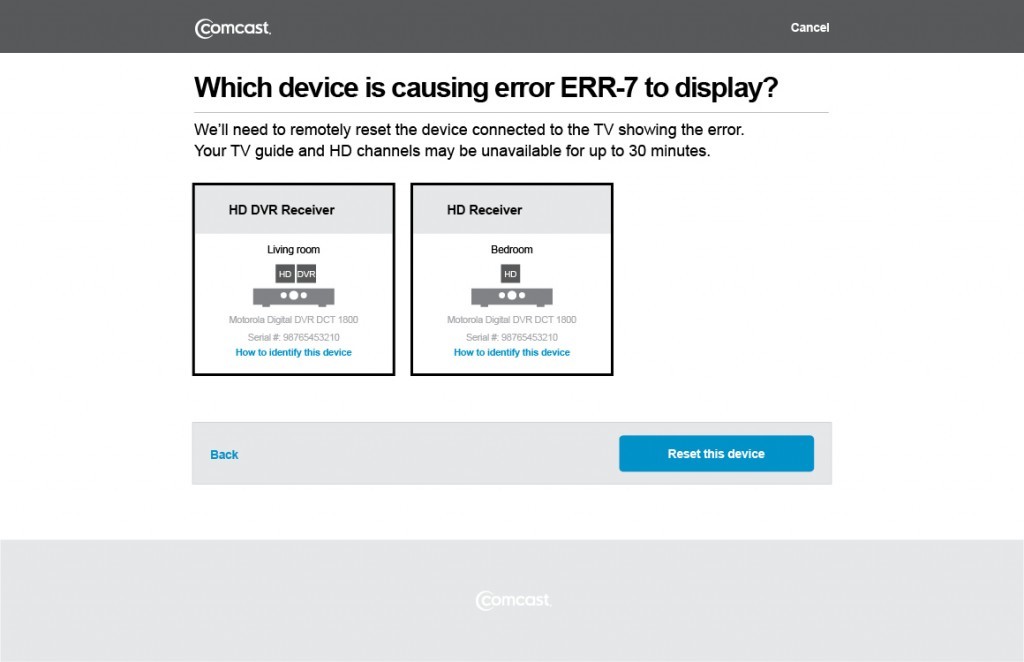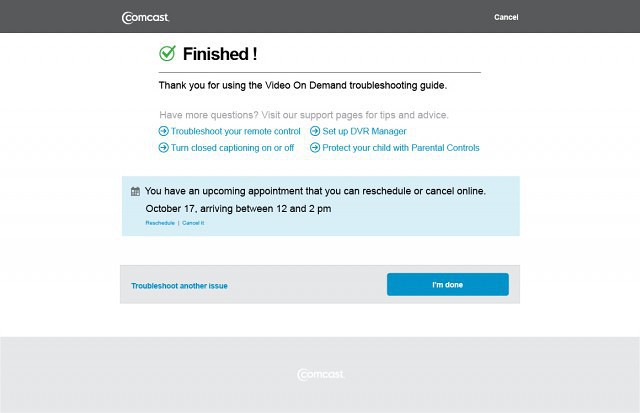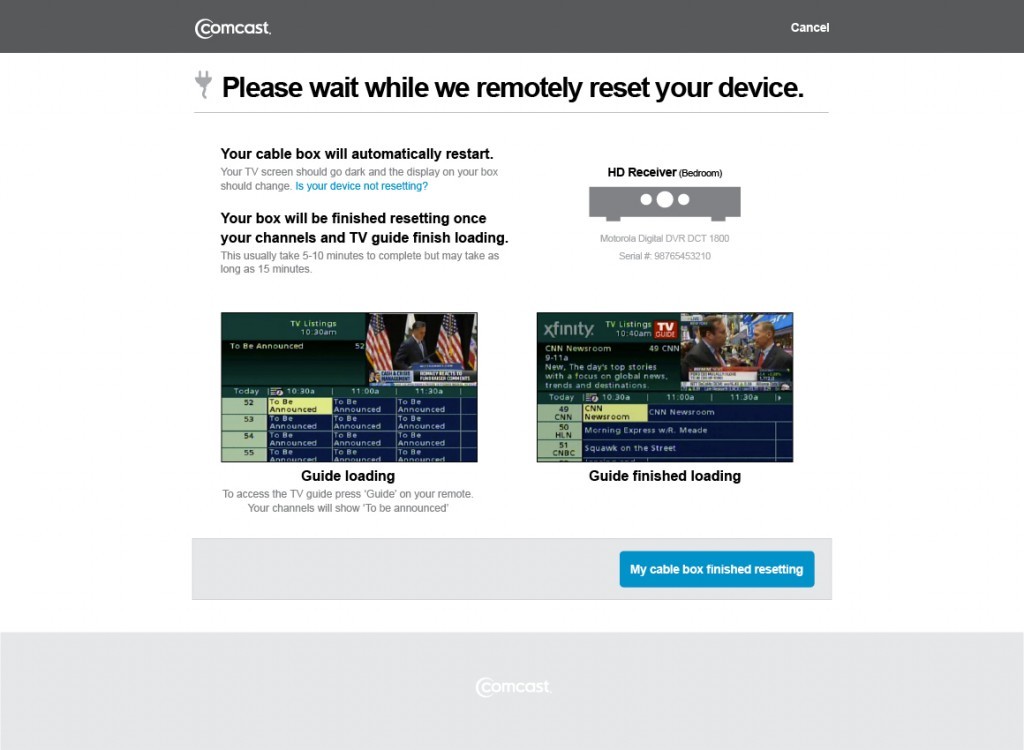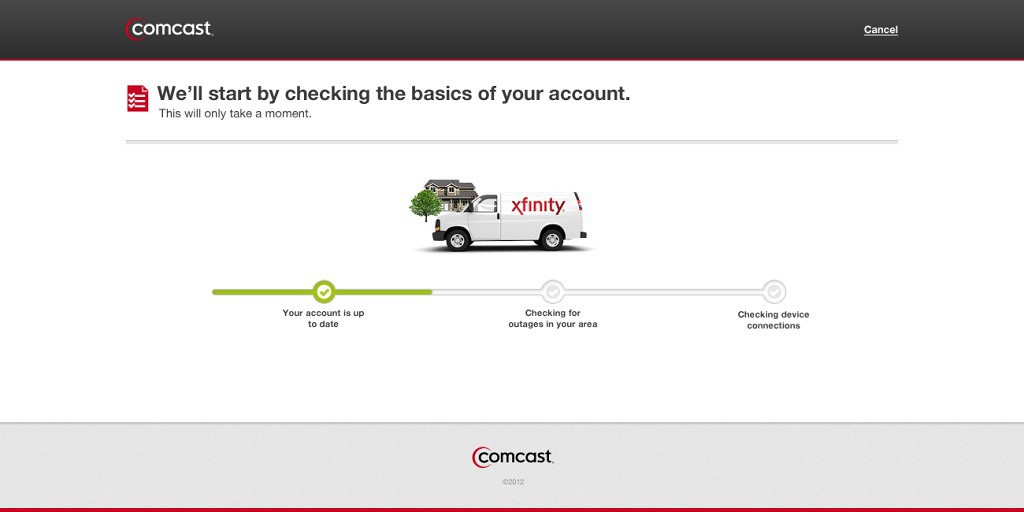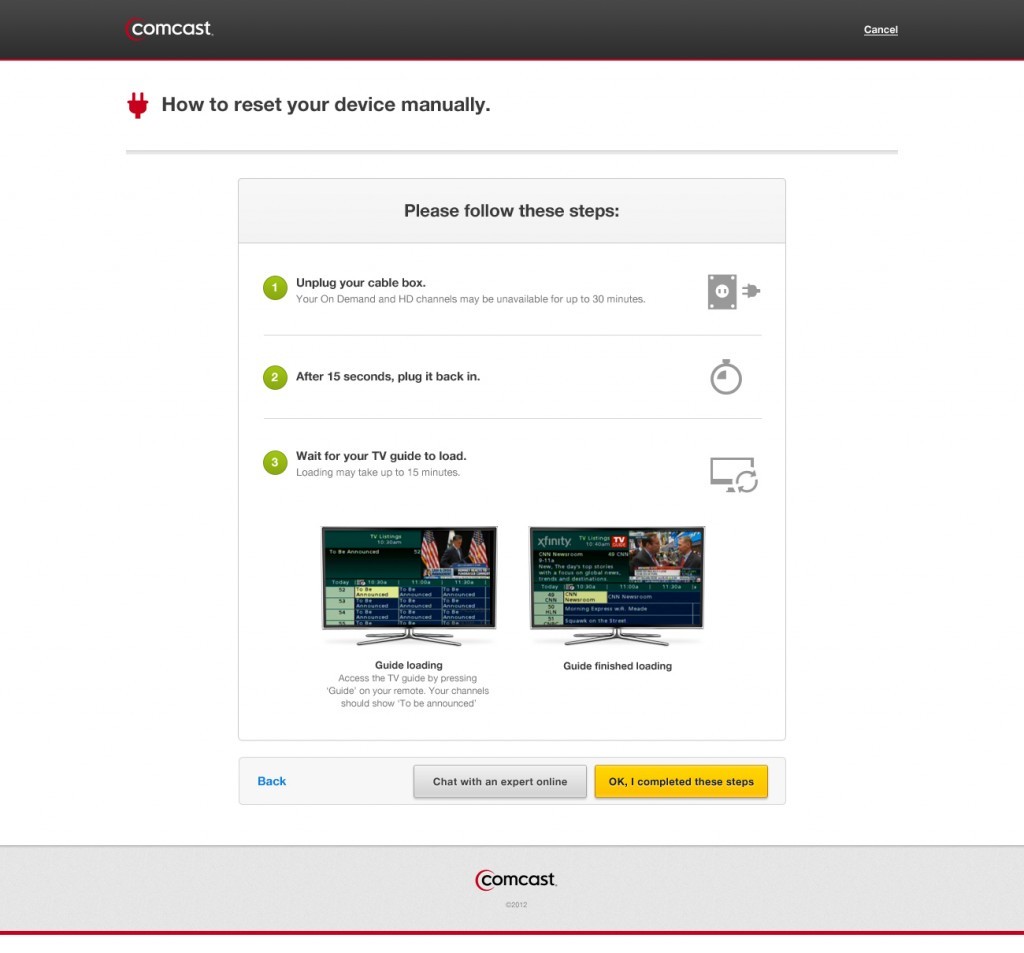The Process
We started the project by understanding the limitations and opportunities hidden within the troubleshooting systems at Comcast. We visited call centers and sat in on calls that allowed us to understand the typical issues Comcast customers faced and some of their frustrations. We also took this opportunity to learn from the call reps this was their turf after all and no one understands how to get problem resolved faster than them. After having done all this we eventually drafted a system and user-flow map that we could reference and modify as new features or issues were uncovered. This document eventually went on to be part of the final deliverable and used by the client to help in back end development.
Definition
After establishing the flows we were able to continue on to wireframes and further experience design. We wanted the experience to be smooth possible and we achieved this by removing any technical jargon or by cleverly reworking some technical limitations into more favorable features. For example the backend systems had the ability to detect and display numerous errors but out of all those errors only a handful of solutions existed, logically we limited the information the user received to the solutions available.
In order to test the validity of the product and the effectiveness of the flows and experience design we conducted user testing for the troubleshooting guide. Users always surprise you with things you never thought of we needed to adjust the prototype on the fly. Overall the experience was ‘gratifying’ for users.
The Final Deliverable & Designs


